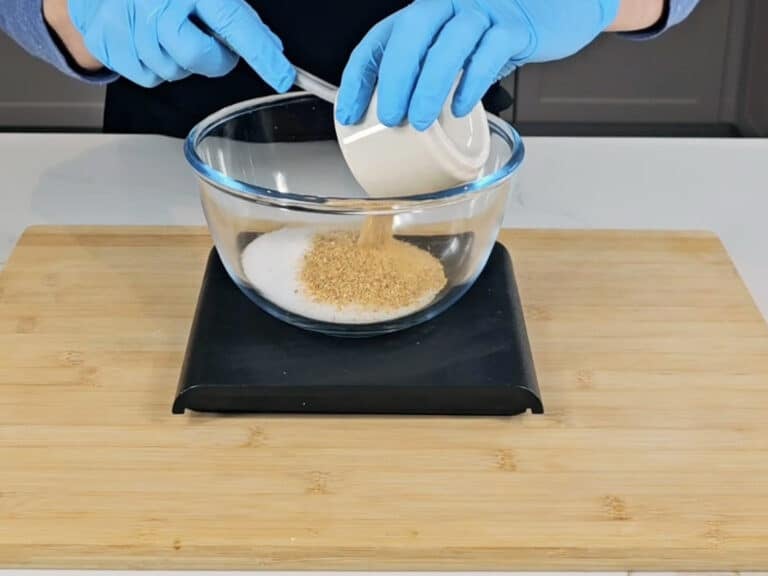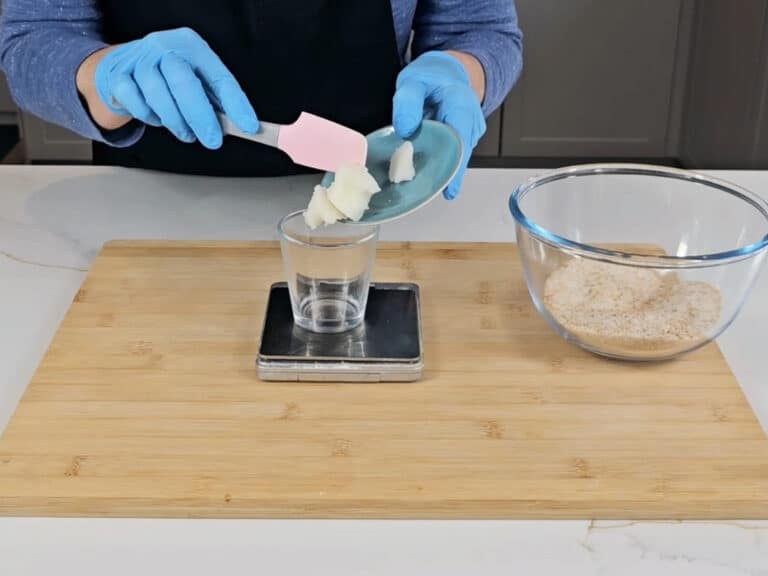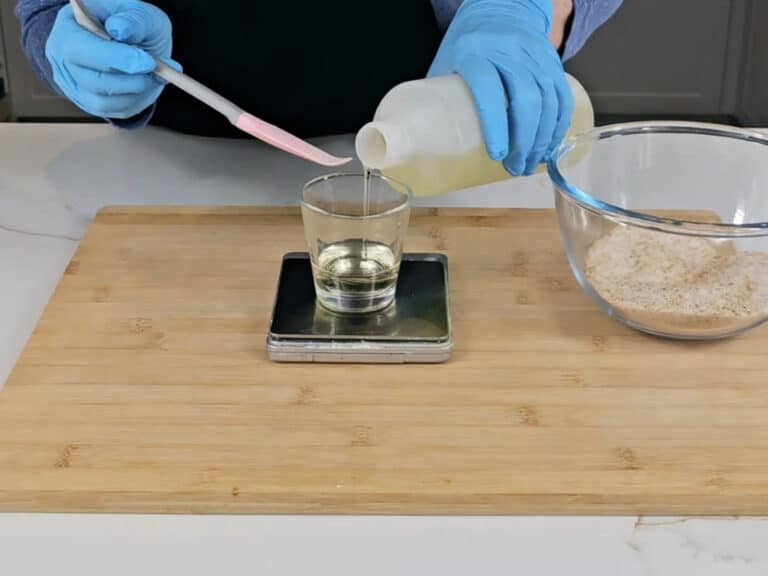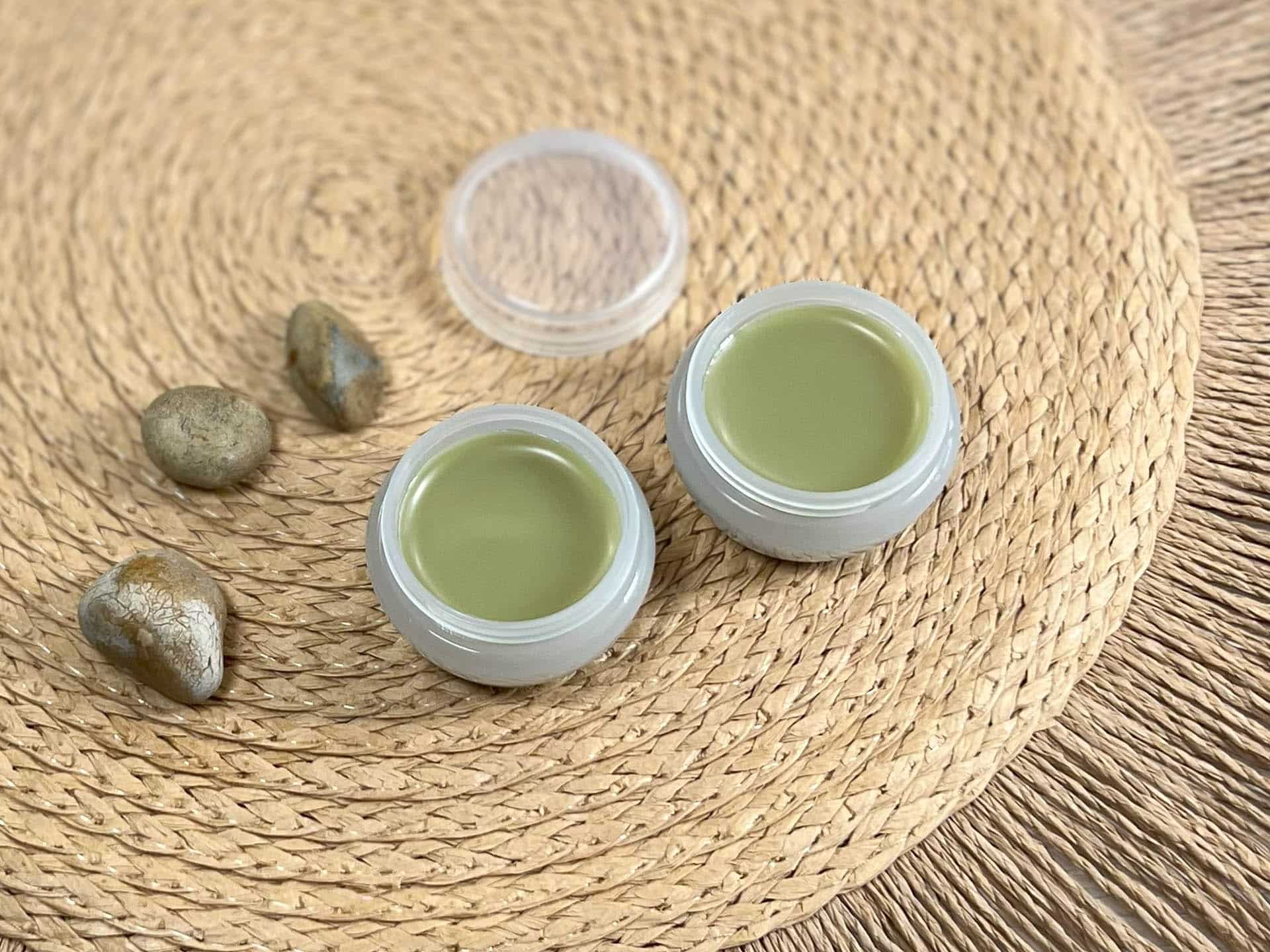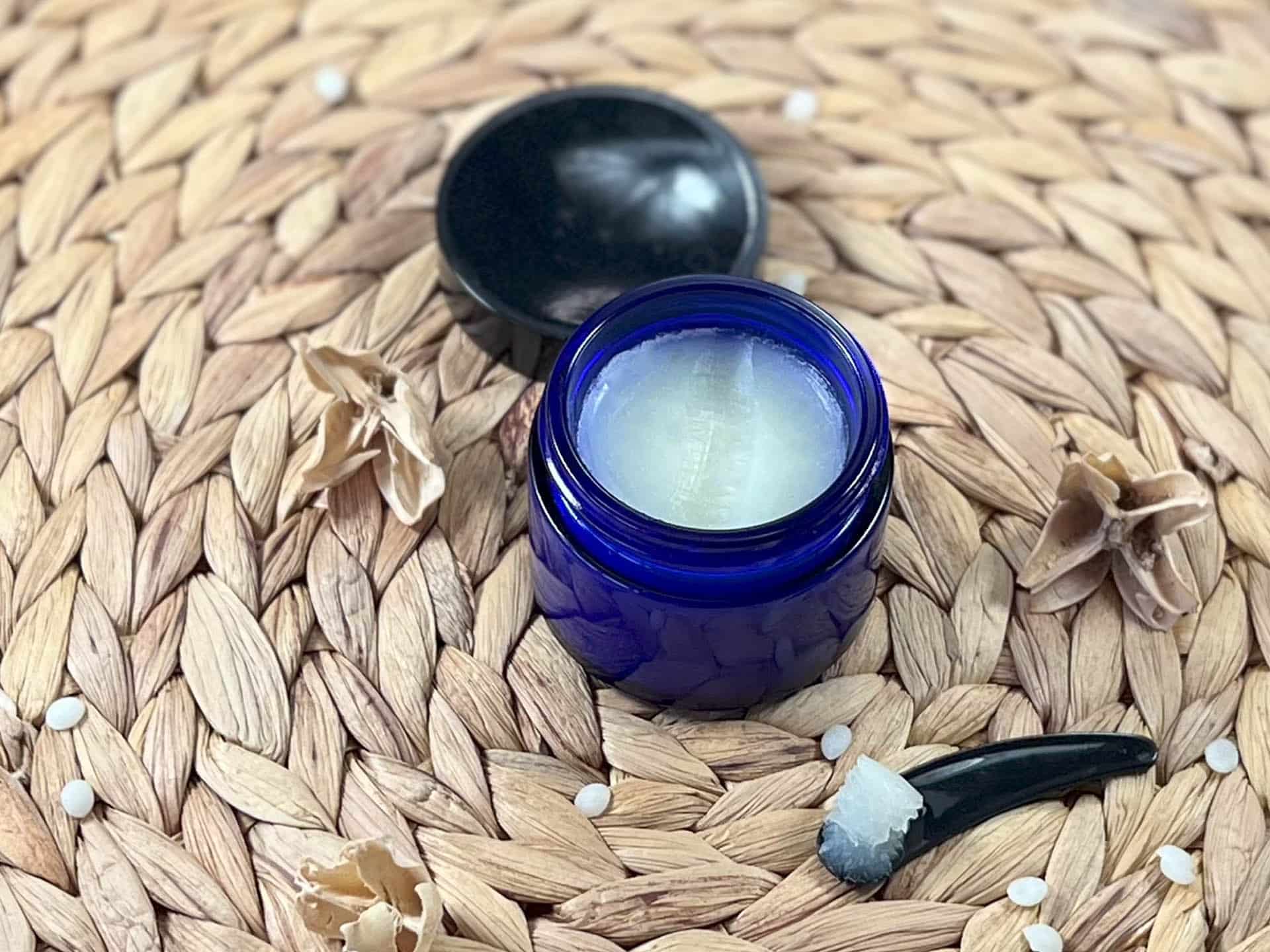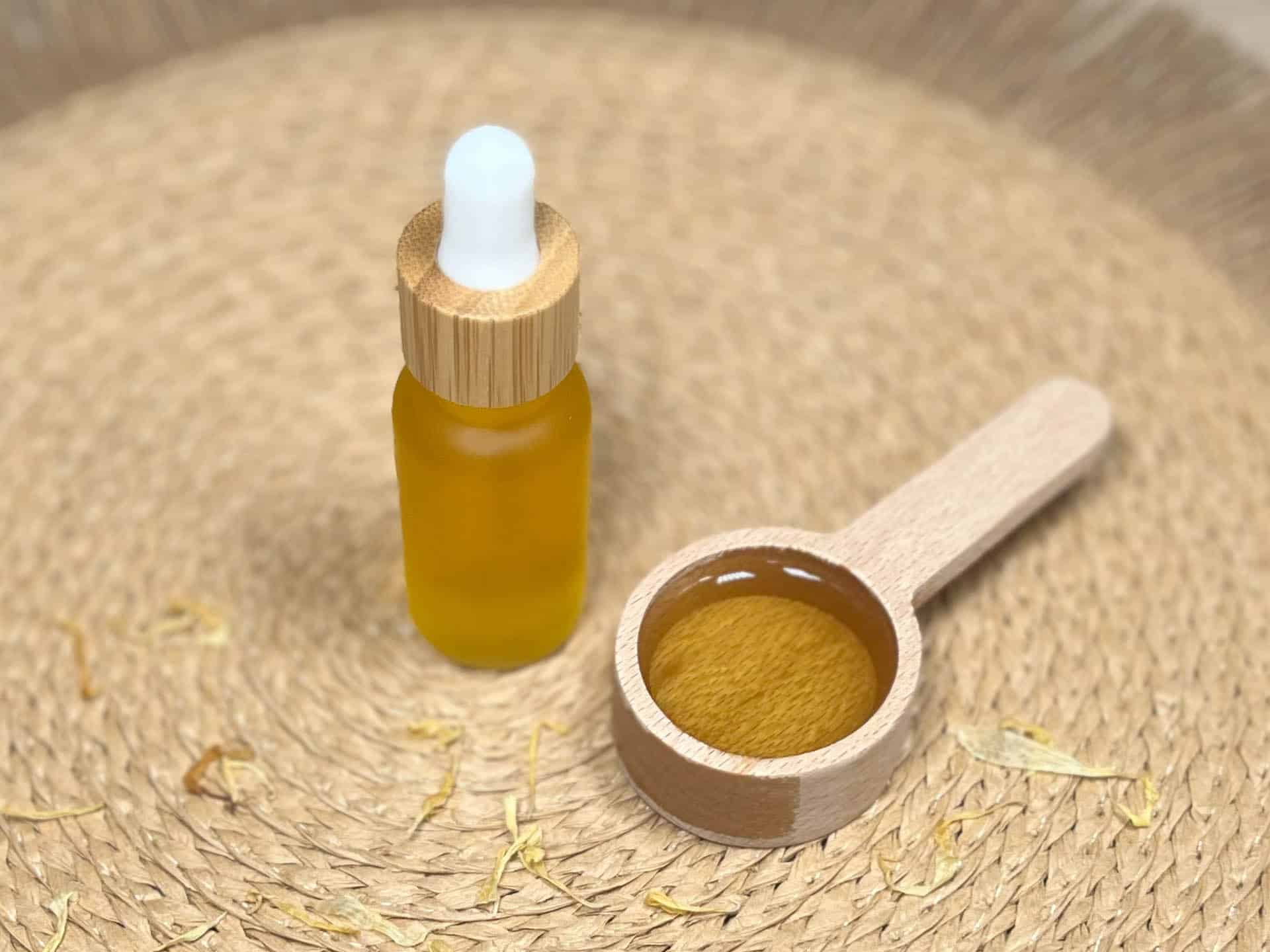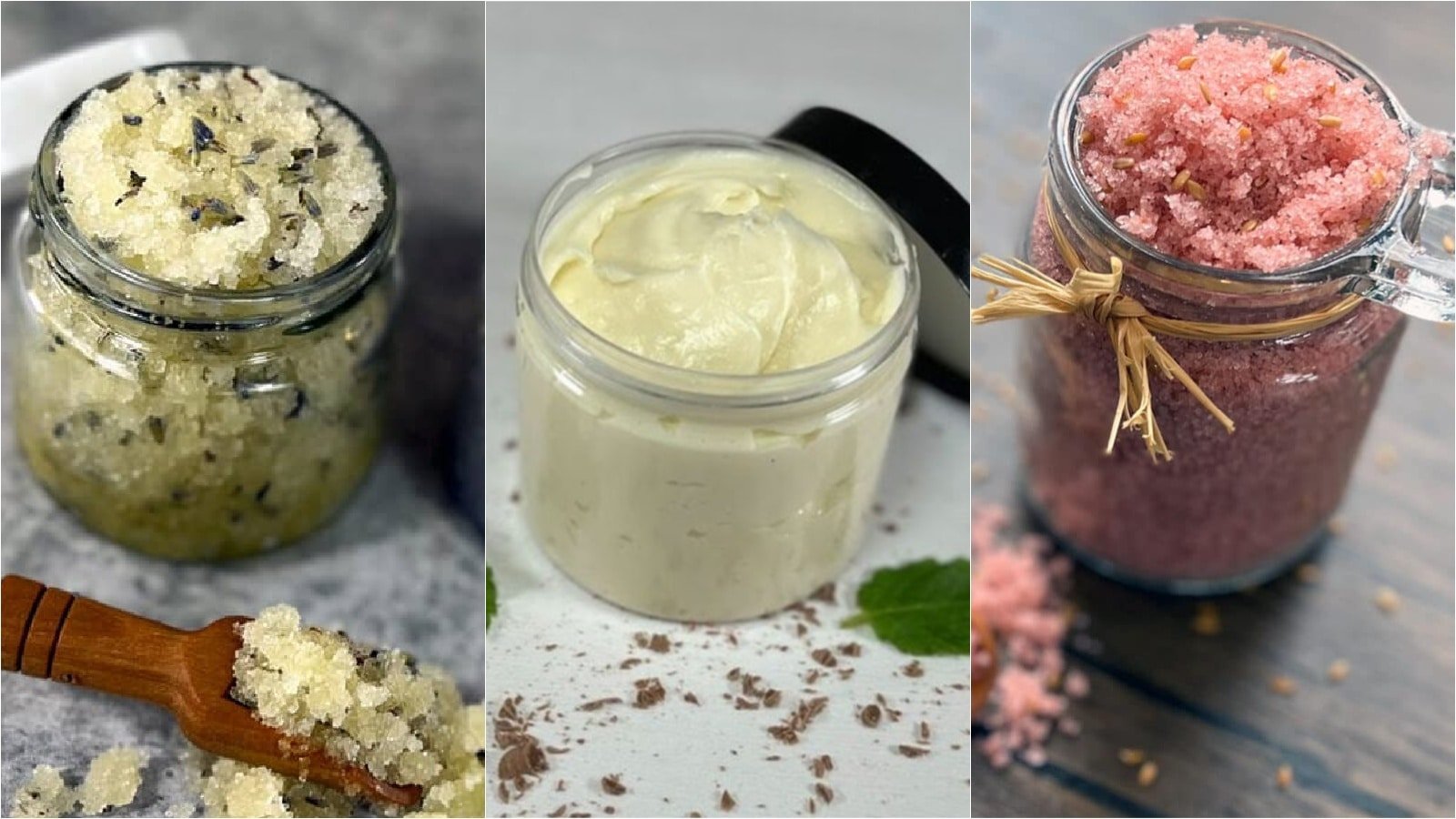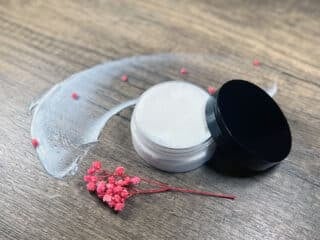Looking to achieve radiant skin? Look no further! In this blog post, I’ve got you covered with 6 amazing homemade salt scrub recipes that will leave your skin glowing and refreshed.
Whether you’re super into making your own body scrubs or just starting to explore the world of natural beauty recipes, these simple and effective sea salt body scrubs are perfect for everyone. Get ready to pamper yourself and unveil the natural radiance of your skin with these easy-to-make recipes. Let’s dive in!
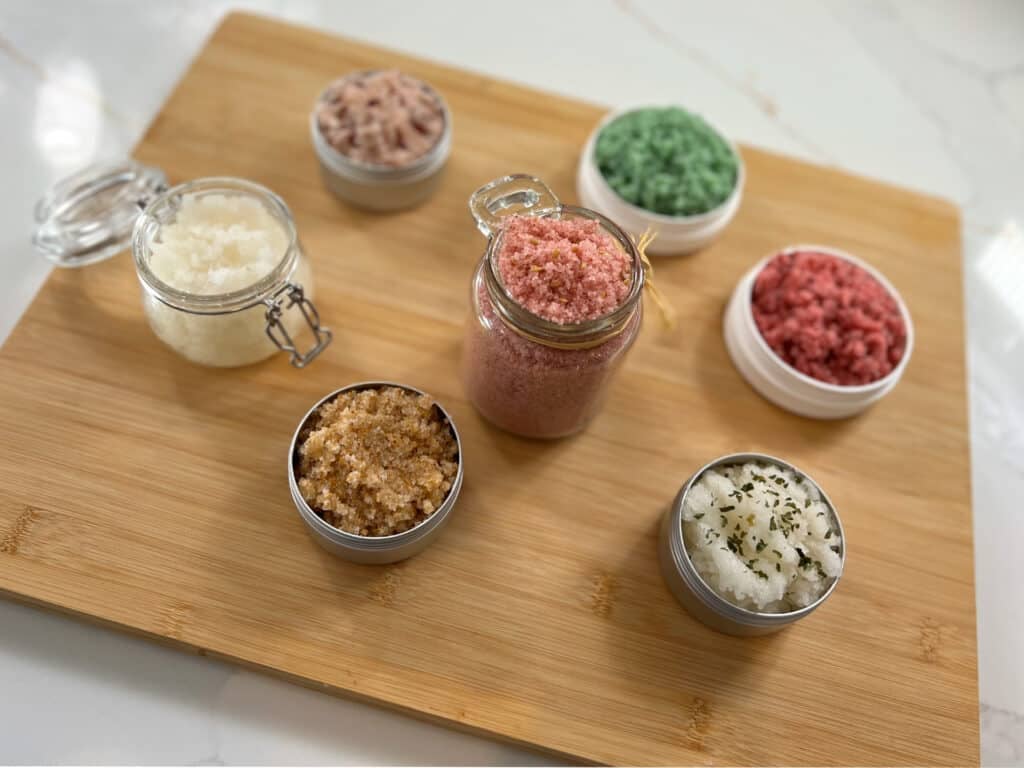
Watch How To Make A Salt Scrub
Introduction
So today, we’re diving into the world of homemade salt scrub recipes with six nourishing options: First up is a refreshing lemon-infused scrub that promises to leave your skin feeling smooth and rejuvenated.
I’ve combined the zesty invigoration and gentle exfoliating power of lemon peel powder with the deep moisturizing benefits of coconut and sweet almond oils. My daughter wanted me to call this lemon heaven, as it’s her new favorite recipe of mine.
And let’s not forget my addition of vitamin E, not just as a skin-loving nutrient, but as a natural ingredient to preserve our lovely oils (more on this later). And, of course, we’ll cover the importance of adding a natural preservative system to keep your homemade product fresh and safe to use over time. After all, we want to keep this product looking and smelling as fresh as real lemons!
Whether you’re a DIY enthusiast or a beginner in homemade beauty products, this tutorial is designed to guide you through each step of the process, ensuring you end up with a scrub that’s both luxurious and effective.
So, gather your ingredients, and let’s get started on creating a salt scrub recipe that will be a delightful addition to your skincare routine!
Exfoliants

Because this is first and foremost a homemade salt scrub recipe, I’m using some finely ground sea salt as my exfoliant. You can happily substitute this for either Epsom salts or Himalayan salts, but you’ll bump up the cost of production. The pink salts might work better if you’re using a botanical powder that is naturally pink as well.
The botanical powder we are using is lemon peel, to go with the lemon theme of this body scrub. It’s a wonderful exfoliant, but you can happily substitute for a range of different botanical powders.
Orange, lavender, oat, and cornmeal powders would all work well here as substitutions. You could also omit the botanical powders completely and instead opt for a good cosmetic clay or baking soda.
Whatever you do, you need to include an exfoliant. Without it, this product isn’t an exfoliator at all. In fact, exfoliating the skin can be very important for supporting good skin health, as it helps to eliminate cracks in the skin where microbes become trapped and then multiply. You really need one here.
Like in many body scrubs, dead sea salt which is believed to provide more healing benefits can be used here, but you should expect your scrub to be a lot sloppier, so perhaps only substitute 15 to 20% of the salt.
Alongside the exfoliants, you can also use a small amount of fresh herbs or dried flowers to make this scrub really stand out!
Carrier Oils

I’ve opted for coconut oil and Sweet almond oil for this recipe. Coconut oil is a solid oil, so will lend some stiffening power to the body scrub. However, it’s also deeply cleansing, soothing, anti-inflammatory and also anti-microbial. It’s the perfect oil for a body scrub.
I’ve also added some sweet almond, as it’s deeply nourishing and synergizes well with the coconut oil. However, you can easily substitute this oil for any oil that your skin craves or loves, for example, Jojoba oil is another popular choice. You can also opt for an oil that is more suitable for your skin type. The only carrier oil I would avoid for this recipe is castor, as it’s much too thick and sticky.
Antioxidants & Preservatives

The inclusion of an antioxidant in any recipe that contains oil is a must. This is because when we use our products, the oil ingredients in our recipes are more susceptible to oxidation. You may know that over time, oils can become rancid, this is exactly what I’m talking about here.
So, to avoid applying rancid oil to our bodies, we can use a little vitamin E (at 1%), to slow this process down. But let’s not forget, this isn’t a true preservative, and so we’ll want to add one of those too.
While this is an all-oil product (anhydrous), so we have less to worry about when it comes to microbial growth, I would still include a preservative system here. This is because it’s just so easy to accidentally cross-contaminate a product that is designed to be used in the bathroom.
Even damp fingers can quickly ruin a product, and the condensation in the bathroom will do the same. Therefore, do yourself and your skin a favor and include a preservative system.
Your best option for a natural preservative system here is Geogard ECT known as Preservative Eco in the UK (Inci: benzyl alcohol, salicylic acid, glycerin, sorbic acid). It is accepted in natural skin care and is soluble in both water and oil (up to a certain point).
If you’re not bothered about the natural status of your ingredients, there are several other preservatives available.
Aromaceuticals
Last but not least, let’s chat about essential oils and scents. While you could for sure swap this out for whatever essential oil you have to hand, I wanted to use a lemon essential oil to synergize with my theme.
Furthermore, lemon is great for detoxifying and cleansing the skin. But it gets better. The lemon can help lift skin tone and fight hyperpigmentation – so great for those dark spots under the arms or between the thighs!
However, you want to get yourself some distilled lemon essential oil. This means the ingredient has been extracted via a process known as steam distillation, rather than mechanical extraction.
Ordinary lemon eo can be a little harsh on the skin. And don’t forget, citrus essential oils can also cause phototoxicity, making skin prone to adverse reactions under sunlight. So do yourself a favor and opt for the distilled version.
If you can’t get distilled, then just swap it for something else like sweet orange or grapefruit – both of which aren’t phototoxic. While you could limit the usage of this product to just nighttime use, I feel like we all need to accept now that regular lemon eo is dangerous and should be avoided.
You can also opt for a lemon fragrance oil, or for any other fragrance oil for that matter. But these are synthetic ingredients and should be avoided if keeping your products natural is important to you.
OK, let’s make salt body scrub
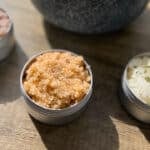
Lemon Sea Salt Scrub Recipe
As an Amazon Associate, I earn from qualifying purchases. If you buy via the links here I may earn a small affiliate commission at no cost to you, please read my affiliate disclosure.
Ingredients
- 146 g Fine Sea Salt (fine grade)
- 16 g Lemon Peel Powder (coarsely ground)
- 16 g Coconut Oil
- 16 g Sweet Almond Oil
- 2 g Vitamin E Oil
- 2 g Lemon Essential Oil
- 2 g Preservative
- Cosmetic Jar 8oz (200g)
Video
Instructions
- Weigh and place the salt, and lemon peel powder into a bowl. give them a good stir until well combined.146 g Fine Sea Salt, 16 g Lemon Peel Powder
- Weigh the coconut oil into the heat proof beaker. Gently melt the coconut oil by setting the beaker in warm water, or by giving it a quick blast in the microwave until it just melted.16 g Coconut Oil
- Add the sweet almond oil, vitamin E, essential oil, and preservative (if using) to the melted coconut oil.16 g Sweet Almond Oil, 2 g Vitamin E Oil, 2 g Lemon Essential Oil, 2 g Preservative
- Give the oils a quick stir, before pouring them into the dry salt mix. Stir again until thoroughly combined. If at this stage you find that your scrub is too runny, you can add a little more of the dry ingredient. If it is too dry, then add a little more sweet almond oil.
- Once you are happy with the consistency, transfer to a clean, suitable PET, aluminum, or glass jar ready for use.Cosmetic Jar 8oz
Easy Alternatives
Because it’s fun to customize your products, I’ve whipped up a couple of different varieties of this scrub that you could try. Lemon isn’t everyone’s cup of tea, after all.

Peppermint & Lime Salt Scrub
First up, I swapped out the lemon essential oil and used peppermint and lime essential oils (using 1g of each). However, lime suffers from the same problems as lemon essential oil – so you’ll want to get yourself the distilled version of the lime.
I also used bicarbonate of soda instead of lemon peel powder here, as I don’t think the lemon would work so well in this variant. However, I have sprinkled some dried mint to really sell the minty vibe of this lovely scrub.
Rose With Rose Petals Scrub
For this variation, I swapped out the sea salt for pink Himalayan salt and used bicarb and kaolin clay as co-exfoliants (in place of the lemon peel powder). I just like how the pink works here, and synergizes with the rose theme.
Because the clay is a very absorbent material to work with, I would suggest using only 6g of it here and the rest being the baking soda – at 10g.
While you could use a rose essential oil or absolute, I think they’re much too expensive for use in an exfoliant (save this for your most luxurious anti-aging serums and facial moisturizers). However, you can use rose fragrance oil, which is my preferred choice for these floral variations.
If you want to opt for an essential oil, I would go for a floral fragrance of some kind. It works better for the theme, especially alongside the dried rose petals, which I’m using here as an aesthetic flourish. Rose geranium essential oil would be an apt choice, but keep in mind that it won’t smell much like a rose.
How To Use This Scrub
- Begin by applying some warm water to the skin. It’s always helpful to get things damp first, as it helps with minimizing friction from the exfoliant.
- Then, scoop out a generous amount of the scrub and apply it to the skin. I find it helps to massage it into your skin, using long circular motions. Spend a little extra time on those trouble areas, including the elbows and knees which can see a significant build-up of dead, dry skin.
- After exfoliating, rinse off the excess product. It helps to do all of this in the shower, then you don’t risk the scrub ending up on your carpet.
- I always follow this up by patting the skin dry with a clean towel. I do this routine once or twice a week to keep my skin feeling ultra-soft, smooth and blemish-free!
Three More DIY Salt Scrub Recipes
Ocean Breeze Revitalizing Sea Salt Scrub
The Ocean Breeze Salt Scrub recipe is great, maybe my favorite body scrub that I’ve ever made. It really combines all the stuff I really love in a scrub.

Kiwi Burst – A DIY Foot Scrub
Discover how to make a delightful DIY foot and hand scrub at home. We all need a little self-care from time to time, and often our hands and feet are a little neglected.

Strawberry Jam Body Scrub
This salt scrub is definitely red and wild. And because strawberry is my favorite fruit, I had to see if I could get a scrub to be just as cute. I’m just so excited to share it with you.

Final Thoughts
That’s all I have for you today, but I hope you’ve enjoyed this cute little lemon body scrub recipe – and my two easy alternatives! They are not too abrasive, they make lovely gifts and are not that difficult to make, and perhaps one of the easier products you can integrate that really makes a big change to your skin.
If you like this salt scrub recipe definitely give it a try at home. I love how it makes my skin so soft, and it’s my daughter’s new favorite product. She swears by it and tells me her skin has never felt smoother.
Let me know how you get on with this recipe in the comments below, and I’ll do my best to answer any questions or help you troubleshoot. I’ll be back with some lovely sugar scrubs!

